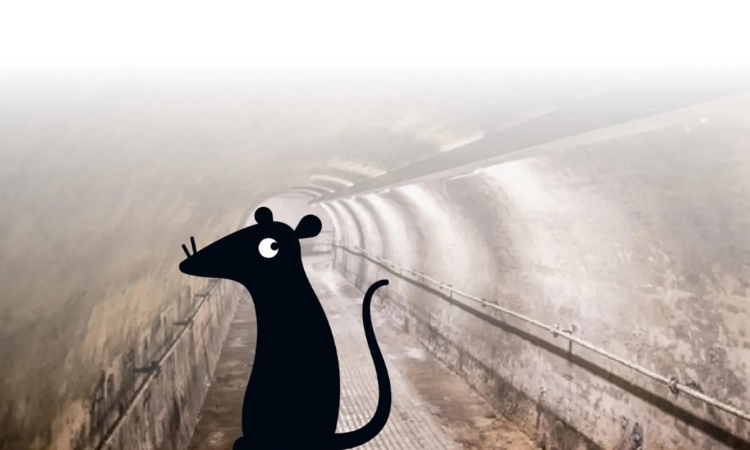An urban geographer explores an underrated underworld
Brussels: The bowels

In Brussels, the entrance to the Underworld lies hidden in an old toll booth. It’s not the only secret kept behind closed doors—you’ve got your everyday Roman ruins and your royal bedchambers— but it’s one that we severely underrate. The sewer system sprawls on for kilometres directly beneath our feet, a parallel metropolis so vital that some authors have compared it to an urban cardiovascular system of sorts.
Sewers let us go about our business (pun intended) by providing essential sanitation services. They also offer scientists valuable clues to public health. Fascinating though sewers may be, however, it was difficult to ramp up enthusiasm among my friend group. So it was on my own that I visited the Brussels Sewer Museum, leaving behind the bustle of a sunny Sunday in early May and descending into the gloom below.
As I walked down the stairs, the air became more humid and the sound of rushing water grew stronger. The concrete steps into the vaulted tunnel glistened in the neon lighting and a dank, musty smell rose to meet me. Occasional rumblings, as of beasts moving about unseen, shook the tunnel as I stepped along the metal grille flooring. All the while, mere metres above, everyday life went on.
At the tunnel’s end, I caught my first glimpse of Brussels’s river, the Senne! There it was, flowing by, behind an ad hoc barrier and some flimsy tape. Perhaps this sighting seems quite mundane to the casual reader, but the Senne proves elusive in central Brussels. It was covered up in 1871 and then rerouted in the 1950s. Nowadays, it only shows up in street names like Mussel Wharf or Little Island. Some Belgian surrealism in a city centre without waterways.
Various motives explain the Senne’s 19th-century vaulting. The hope was to avoid floods in the centre, to improve train connections, and to restructure the area and make it more attractive to the bourgeoisie. Besides, the river had become an open-air sewer, and as such, its currents of human waste represented a serious health hazard.
We humans have long tried to distance ourselves from our bodily functions and fluids. Centuries ago, people were already dumping their effluents into pits and rivers or shovelling them off to the countryside. We don’t care to dwell on these material realities. I mean, had I ever considered the fifty or so workers it takes to maintain the beating arteries of Brussels’s sewer system?
My interest in sewers and public sanitation stems from my research for my Master's thesis in Urban Geography. I’m investigating public toilet provision in the Brussels city centre. It’s an engrossing topic. After all, toilets, like sewers, cater to a universal bodily function. Almost more than any other public space, toilets entrench, reinforce, and reveal inequalities. Once you notice this issue, you will never be able to unsee it. Stay tuned for more.